ObjectGears – A new CMDB Integration Partner
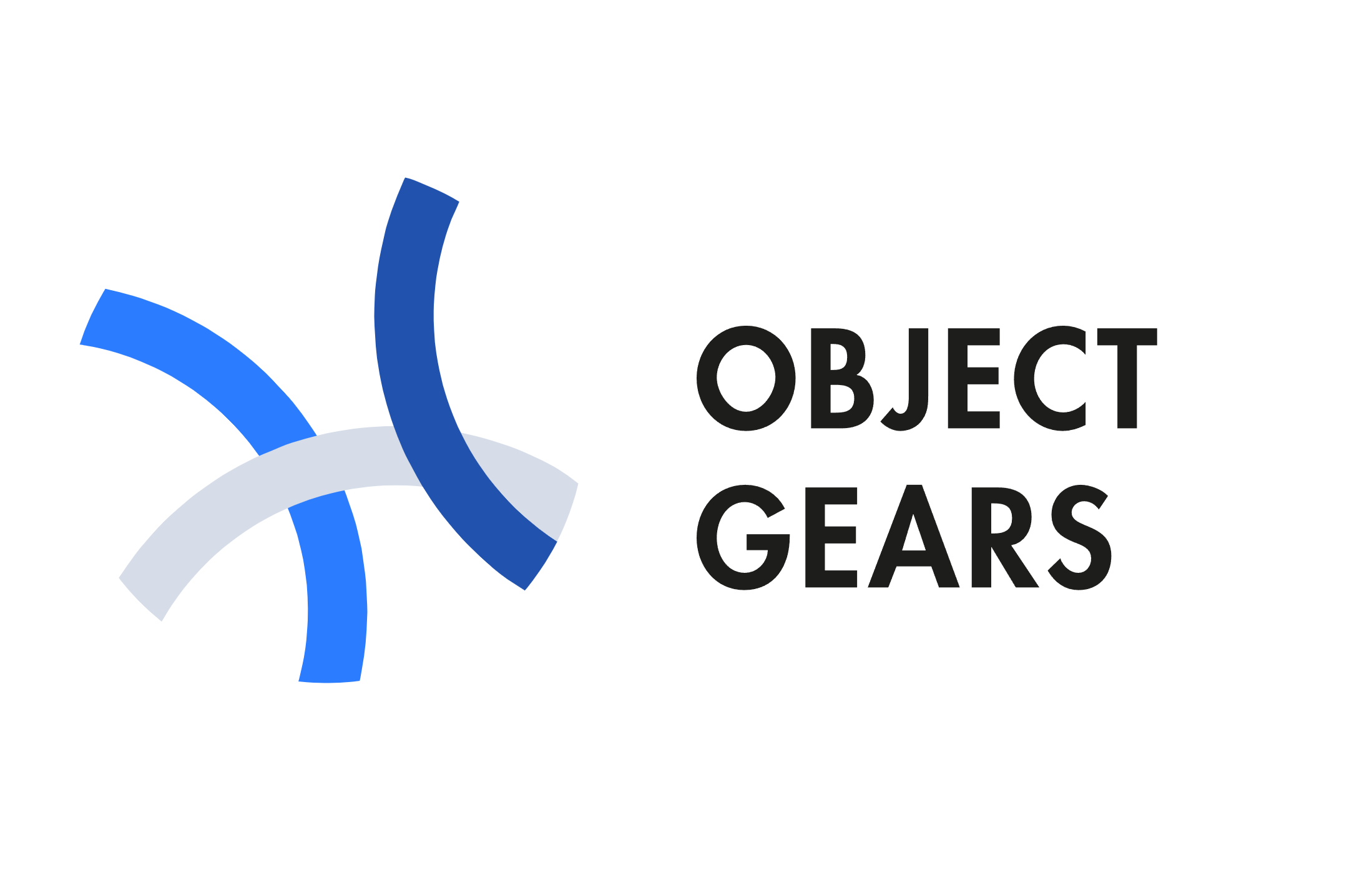
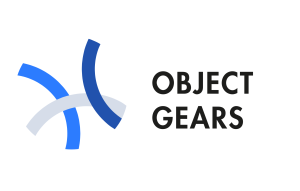 Dear JDisc friends,
Dear JDisc friends,
I would like to introduce you to a new CMDB integration partner ObjectGears. The original Posting has been published in this blog entry (original in Czech) describing the integration between JDisc Discovery and ObjectGears’ IT Configuration Database. This is an English translation…
Benefits from connecting CMDB, Discovery, and Enterprise Architecture
In this article, we will take a look at issues solved when selecting Discovery software and benefits from connecting Configuration database CMDB, automated device and software discovery, and modeling Enterprise Architecture.
By connecting these areas, we will benefit from reusing data that we have captured, online connection, and data up-to-dateness. All this in a single platform.
Configuration database CMDB
Configuration database keeps all the relevant information about configuration items of our information system, including their relationships. Examples of configuration items are servers, applications, databases, interfaces, and data flows.
We can develop tools and applications above these data, which support processes in which we are working with these data…project and change management, incident management, work with catalog requirements, task monitoring, knowledge management, and documentation. All these processes have in common the fact that they deal with Configuration items.
Discovery
Discovery responds to the question how to get Configuration items into the database and how to keep it up to date. The answer depends on multiple factors. One of them is type of the Configuration item. We can read the data in an automated way in case of hardware, installed software or databases. It is possible to connect to the server and read installed software or databases from the database server. For this we need permissions for the account which runs the software performing such a scan, corresponding firewall rules between network segments that we are scanning and segment from which we scan and depending on selected technology also, other requirements.
Some configuration types, however, do not allow such an approach. For example, applications supporting business processes cannot be obtained by scanning software on all servers. Various web applications, parts of intranet or particular MS Excel files that we consider as tools used by our processes cannot be identified by scanning.
Also, data flows between applications and their interfaces cannot be obtained in an automated way. Monitoring of the network traffic can reveal new facts about communication between servers, but these will be rather hint for creating an overview of principal data exchanges between system. Overview of Enterprise processes is then a typical example of Configuration items which cannot be provided by any scan.
So, if we focus on Configuration items that can be read automatically, we should consider whether we want to read them by a specialized Discovery tool or in another way. If you are buying new hardware twice a year it might be most simple just to enter the data into CMDB manually.
We will have different situation with items like Active Directory accounts and groups, server certificates, server disks, roles, services, functions etc. These items can be read by Configuration databases in a standard way (e.g., ObjectGears infrastructure functions). We often do not need a special Discovery Solution for them.
When will be Discovery software a real help?
Imaging organizations operate an extensive infrastructure also containing special devices like camera systems, various sensors etc. Discovery provides two key capabilities. Wide scale of elements can be identified due to focusing on regular updates of all new hardware and software. It also solves practical topics of using many accounts and passwords to various parts of the systems (networks segments, organization units in Active Directory). These are quite special areas which are out of focus for Configuration databases. Nobody can be good at all the areas. Therefore, Discovery shall stay open at best both from the Configuration database vendor and customer, and particular Discovery solution should be selected according to specific needs.
Example of data collected by Discovery solution JDisc.
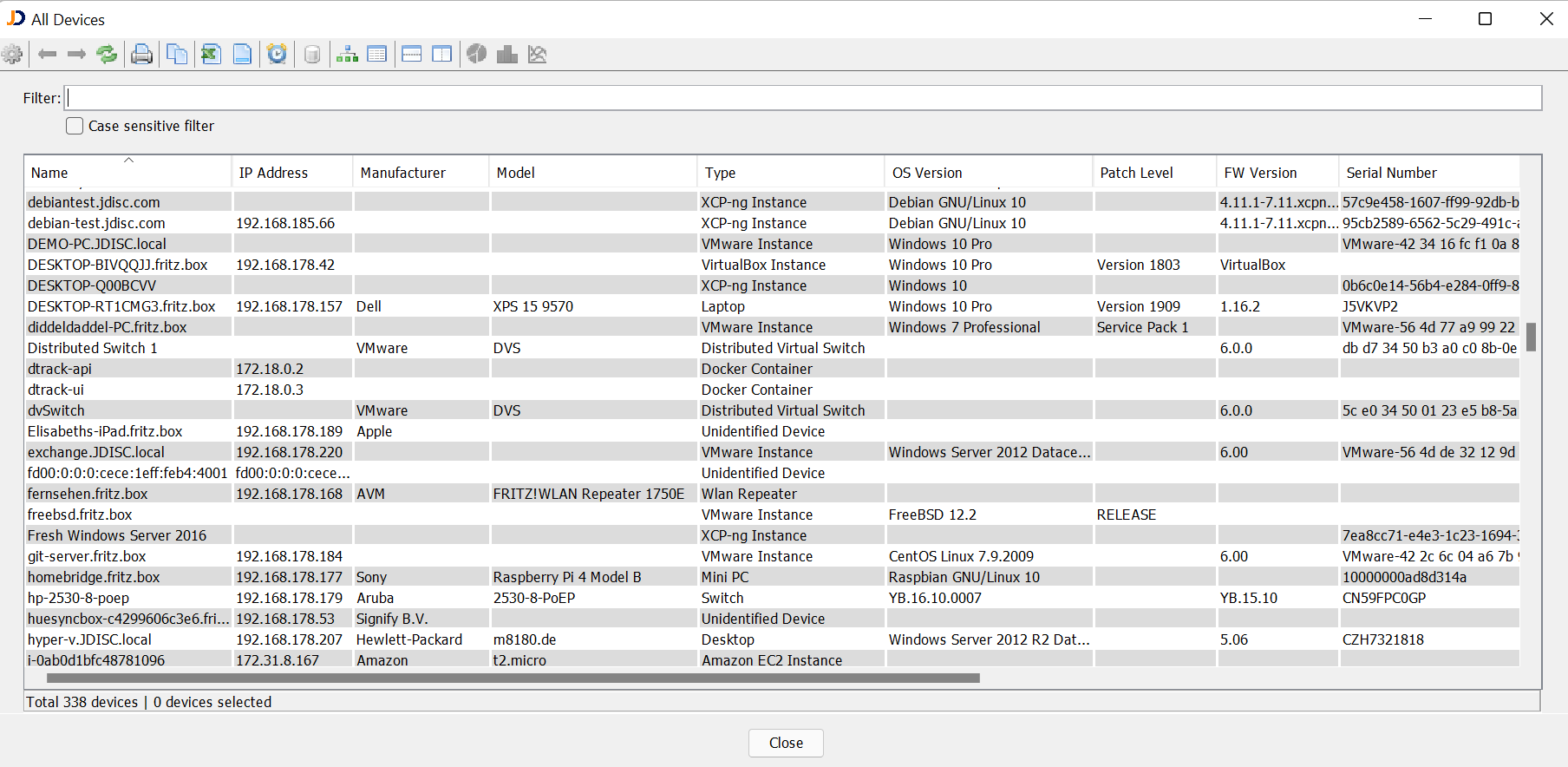
Migration of data from Discovery to ObjectGears system
ObjectGears has great possibilities of extensions for integrating with third-party software.
The below script shows how to easily query the data and store them in ObjectGears. In this way, you manage the data and especially data processing where you can further filter and process the data.
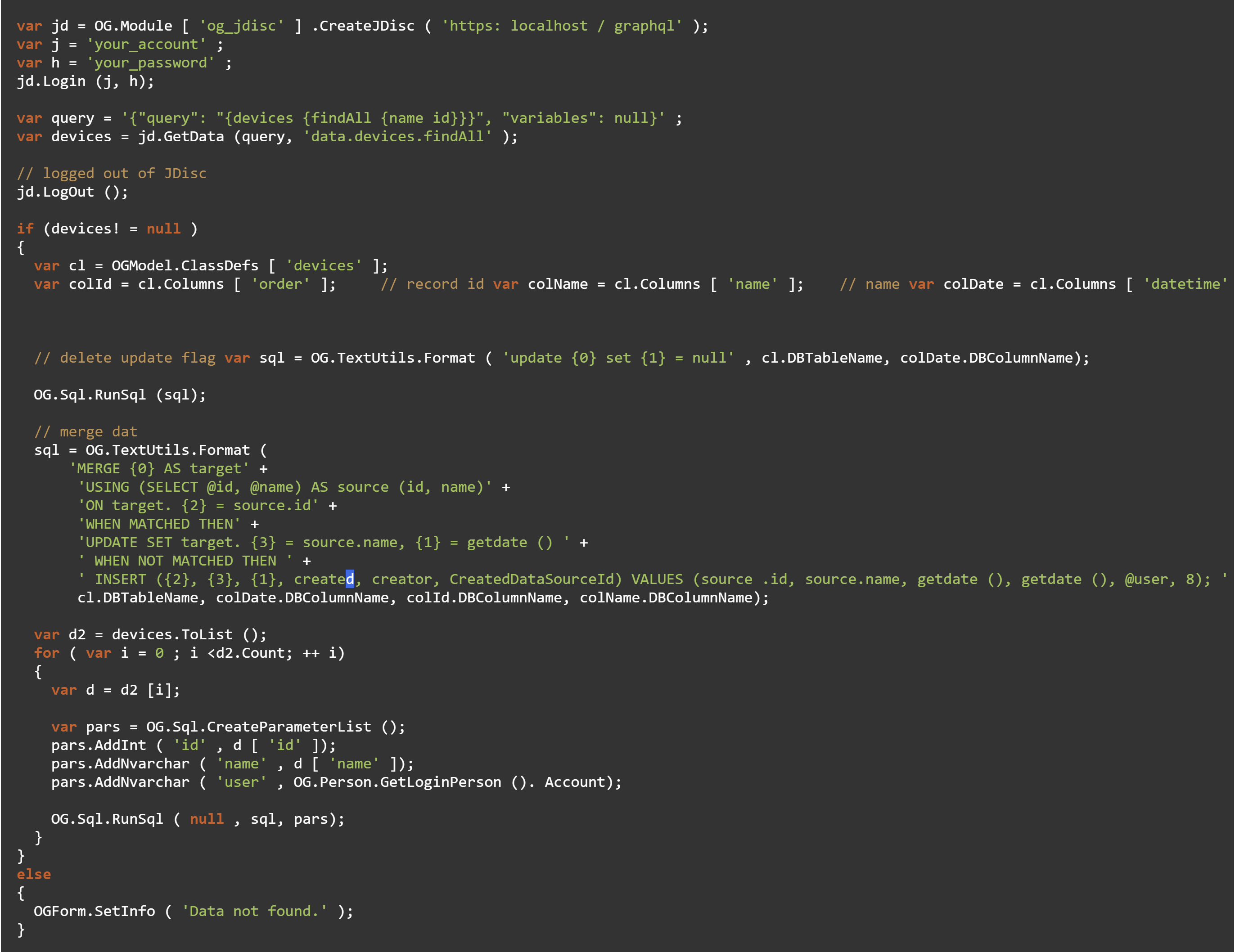
Data loaded from Discovery Solution JDisc in the Configuration database ObjectGears.
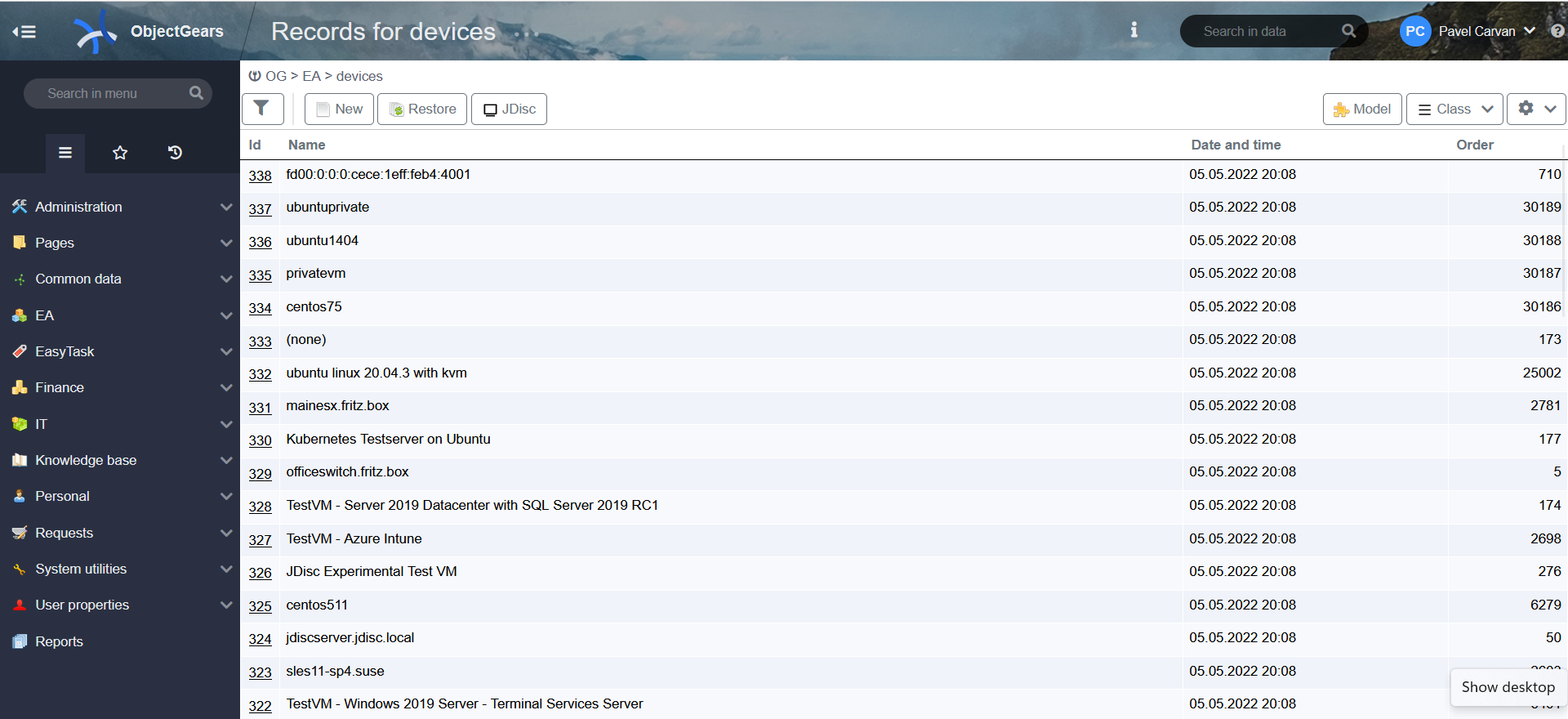 Enterprise Architect
Enterprise Architect
You can transfer the configuration items data from the Configuration database further to other tools. This may be, e.g., a tool for modeling IT architecture and enterprise processes like Sparx Enterprise Architect.
You will utilize configuration items data in the technology layer of Archimate schemes or for simple mapping of applications and processes that they support. Similarly, you can transfer data captured in the Enterprise Architecture modeling tool back to the Configuration database CMDB. Processes and activities modelled e.g., in Enterprise Architect will be valuable information also in many processes managed by the Configuration database. It may be e.g., Business Impact Analysis evaluating the criticality of enterprise processes, resp. financial and non-financial losses when processes are not available and guaranteed availability of applications that relates to infrastructure and securing personnel for the concerned systems.
Example of data in Enterprise Architect repository, that you can simply transfer between Configuration database and a tool for Enterprise architecture modeling.
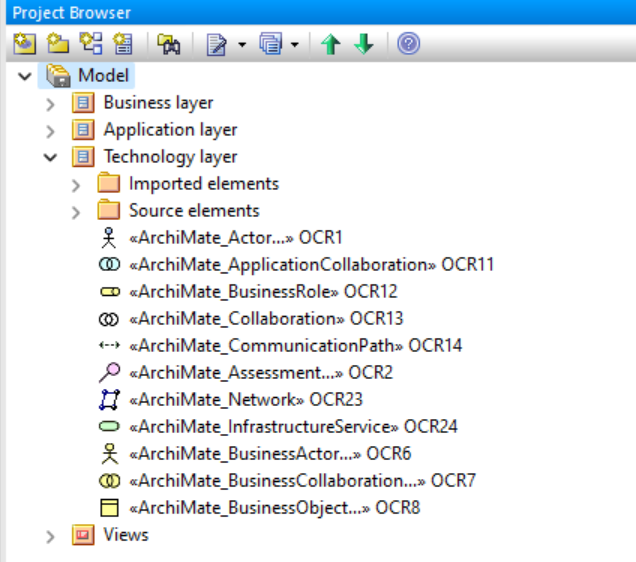
You can use similarly simple script as in the example above for a two-way data transfer between the ObjectGears system and Enterprise Architect.
ObjectGears system advantages
ObjectGears system is designed for quick and easy design of necessary data structures (tables and columns) with managed access (by means of roles), and these data structures are then used in various web parts/widgets. This allows to quickly create a custom module for access to third-party applications and manage it by means of scripts.
